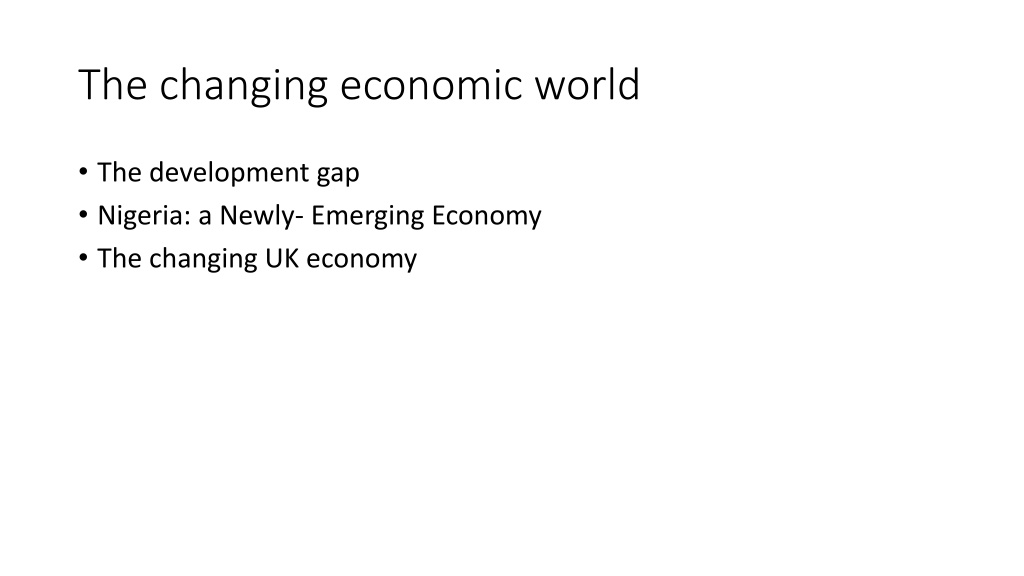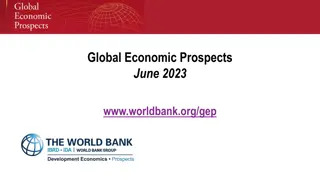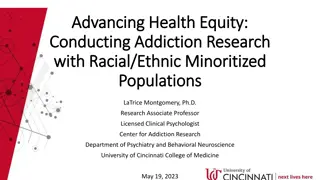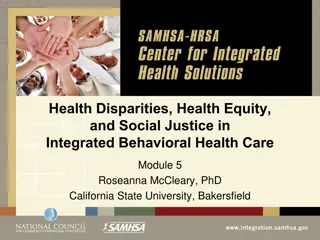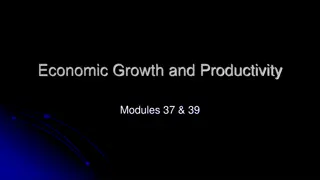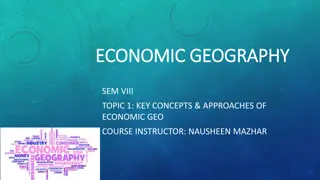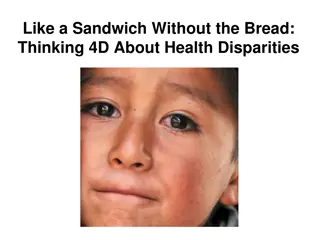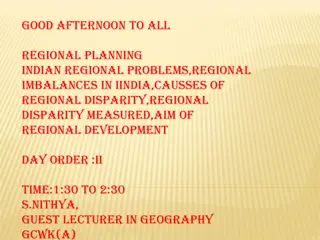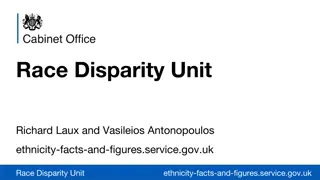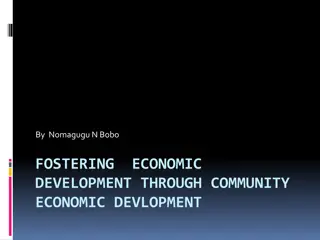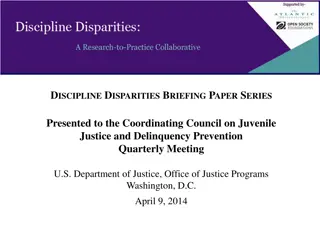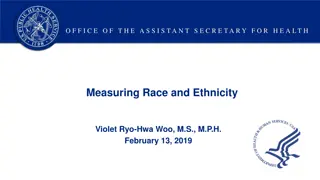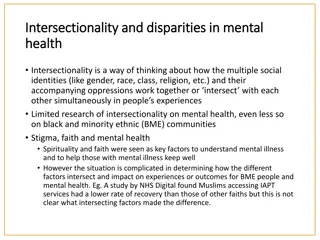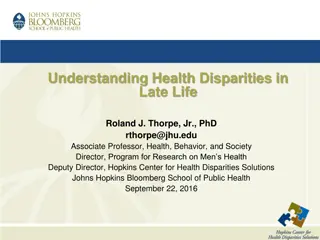Understanding Global Economic Disparities and Development Challenges
Exploring the economic disparities and development challenges worldwide, this content delves into factors influencing development, measuring quality of life, demographic transition, population pyramids, and the causes and effects of uneven development. It highlights issues such as wealth and health inequalities, migration patterns, and the impact of historical, physical, and economic causes on different countries.
- Global Economic Disparities
- Development Challenges
- Quality of Life
- Demographic Transition
- Migration Patterns
Download Presentation

Please find below an Image/Link to download the presentation.
The content on the website is provided AS IS for your information and personal use only. It may not be sold, licensed, or shared on other websites without obtaining consent from the author. Download presentation by click this link. If you encounter any issues during the download, it is possible that the publisher has removed the file from their server.
E N D
Presentation Transcript
The changing economic world The development gap Nigeria: a Newly- Emerging Economy The changing UK economy
The development gap There are global variations in economic development and quality of life. Various strategies exist for reducing the global development gap.
There are global variations in economic development and quality of life. What is development: Positive changes that make things better. Both economically (standard of living) and socially (quality of life). Development can be influenced by environmental, social, economic and political factors. The development gap is the difference in SOL and QOL between the richest and poorest countries.
There are global variations in economic development and quality of life. Measuring development - GNI vs HDI. Can we measure QOL? Indicators BR, DR, IM, Lit, Safe water, Doctors, phones, internet. Issues out of date, hard to collect, corruption, informal economy. Comparing QOL is very difficult a refugee in Syria might have nothing but be relatively safe. Maths questions.
Population pyramids and dependency ratio Children + elderly Workers x100 Lower is better for the economy USA 18.9 + 15.5 65.6 X100 = 52.4 Nigeria 43.9 + 2.7 53.4 X100 = 87.3
Causes of uneven development - Chad Physical causes landlocked, climate related diseases and pests (malaria and locusts), extreme weather (drought), lack of safe water. Economic causes Trade (raw materials vs manufactured goods), single product economies (cotton in Chad), most LICs don t do much trade at all. Historical causes colonialism, instability since independence.
Effects - inequalities in wealth and health Wealth Health
Effects - migration International migration Immigrant, emigrant, economic migrant, refugee, displaced person Refugees Syria to EU Economic migrants Eastern Europe to UK pre Brexit
Various strategies exist for reducing the global development gap. Economic strategies Aid and appropriate technology Fair trade Debt relief Tourism case study - Jamaica
Reducing the gap economic strategies Investment TNCs and foreign governments in Africa (Shell Nigeria or China and Ethiopian railway). Don t get something for nothing. Industrial development Malaysia rapid development but environmental impact. Tourism Jamaica, easy to start up with right climate, vulnerable to recession (and covid). All bring infrastructure that can be used by wider economy. Roads, rail, ports, airports, power stations and supply, safe water, communications.
Aid and intermediate technology Types of aid bilateral, multilateral or voluntary, short or long term, tied. 0.7% Focus on infrastructure, health and education. Small-scale often best. Goat Aid Oxfam in Malawi Intermediate technology (similar to appropriate technology) eg small dam
Reducing the gap - Fair trade and Fairtrade Is trade fair? Tariffs Quotas Free trade WTO, subsidies, free trade areas Fairtrade Farmer gets more money and a fair price Some of the extra money has to be invested in local community Farming has to be environmentally friendly Use Fairtrade logo
Reducing the gap debt relief Loans and debt debt crisis of 1970s and 1980s low raw material prices and high oil prices 39 HIPCs Debt relief Financial responsibility No corruption Increase spending on health, education and reducing poverty (rainforests) How can this reduce development gap? Yes eg free education in Tanzania increased attendance by 66% No governments will spend the money on arms or corruption Microfinance Grameen Bank
Reducing the gap Tourism in Jamaica Jamaica s economy 24% tourism biggest industry (others include bauxite, sugar cane, rum Tourism generates taxes, employment (200,000), infrastructure (ports, roads and airports) improvements. Can be volatile. Quality of life good for those in tourist areas such as Montego Bay. Less good in centre and on south coast. Environment some negative effects from pollution but tourism is a relatively clean industry. Tourists don t like pollution. Economy - $2billion a year. However growth of cruise ships and all- inclusives a problem. Eco-tourism and staying with locals is better for the economy as money goes in directly and is not taken by big tour companies.
Nigeria: a Newly-Emerging Economy Some LICs or NEEs are experiencing rapid economic development which leads to significant social, environmental and cultural change. I know they aren t Nigerian but even more people on a motorbike!
Exploring Nigeria Where is Nigeria? Global importance MINT country, will be 3rd largest popn in world by 2050, 12th largest oil exporter, 5th largest UN peacekeeper. African importance Fast growing economy, biggest in Africa, 19 million cattle, largest agricultural producer. Problems with corruption, internal strife, power cuts, poor roads. Political context colony until 1960, democracy since 1999. China and USA both investing Social context multi ethnic, multi lingual, 3 main religions. North vs south. Big differences in wealth and development. Cultural context Music, cinema, literature, sport. Landscape and environment
Nigeria in the wider world International links African Union United Nations OPEC Trading relationships Oil is everything Most people work in agriculture (70%) Imports from China, EU, USA Exports to EU, India, USA
Balancing a changing industrial structure Nigeria s sources of income Total shift since oil was discovered in Niger Delta in 1950s. Overly dependent on oil at the moment. English language may be advantage in future. Changes Employment in agriculture has fallen. Manufacturing and services have increased processed foods, textiles, leather, chemicals. Growing home market, cheap labour, improving infrastructure. Paid work growing middle class. Manufacturing industry stimulates growth of supporting industries (eg oil and chemicals). Increase in tax revenue and multiplier effect. More foreign investment.
TNCs in Nigeria goes with economic solutions to development gap What is a TNC? Why is Nigeria attractive -tax incentives, cheap labour, lax environmental laws, access to wider market, access to raw materials. Pros and Cons for Nigeria. Shell Oil 65,000 direct and 250,000 indirect jobs 91% of contracts to Nigerian companies Multiplier effect and tax revenue Education and skills Most jobs go to locals (if not best paid) On the other hand Oil spills, gangsters and militants, air pollution.
The impacts of international aid goes with the development gap stuff on aid. What is aid? 100 million people on less than $1 a day. Why does Nigeria receive aid? About $5 billion. UK and USA biggest donors. Looking at education (primary school literacy), health (nets, immunisations against polio, and safe water) and the economy (microfinance). What does Nigeria receive? What is its impact? Problems Corruption Inappropriate use (arms) Tied aid might be more about what the donor wants.
Managing environmental issues As Nigeria industrialises this has an impact on the environment. Industrial growth chemical waste in water, air pollution, deforestation, desertification (includes commercial farming and logging). Urban growth squatter settlements, waste disposal, sewage, congestion. Mining and oil extraction oil spills Bodo oil spills. Impact on environment but also economy and society.
Quality of life in Nigeria What is quality of life more than just money Water and sanitation Infrastructure Better jobs More disposable income Improved diet Reliable power supplies Better quality healthcare Has everyone benefitted Yes but not to the same extent. Oil wealth has not been used effectively (Malaysia and Nigeria were comparable in 1985 but Malaysia along way ahead now). Corruption and oil dependence could be a problem. Will things keep getting better? Politics needs to stay stable and democratic Environment pollution, deforestation and desertification are big challenges Social ethnic and religious divides. Especially in north and south-east.
The changing UK economy Major changes in the economy of the UK have affected, and will continue to affect, employment patterns and regional growth.
Changes in the UK economy How has it changed? Primary, secondary and tertiary Why has it changed? Deindustrialisation Globalisation mechanisation/automation Labour costs, lack of investment The car industry. Government policy 1945-1979 prop up declining industries 1979-2010 privatise and remove support 2010 today attempts to rebalance transport, investment in manufacturing
A post-industrial economy Tertiary 78% Quaternary -10% Development of IT - tertiary Work from home Control offices and manufacturing from UK Service industries and finance - tertiary City of London Financial services is 10% of GDP. Employs 6% of workers. Research - quaternary Strong universities Likely to be area of growth currently worth 3 billion
Science and business parks What are science parks? Science and knowledge based businesses on one site Employ 75,000 people in UK Near universities Excellent transport links Networking opportunities Attractive locations What are business parks? Cluster of businesses on the edge of town Good access to transport (especially motorways) and parking Businesses are more established and bigger HQs, call-centres, warehouses, retail parks.
Environmental impact of industry can be primary, secondary, tertiary or quaternary On the physical environment Air and water pollution on site dust in air and destroys habitat (Torr Quarry). Landfill. Visual pollution scars landscape (Torr Quarry). Transport adds pollution lorries transporting rock. Sustainability Using technology to reduce pollution. Strict environmental controls on pollution Torr Quarry monitor noise, vibration, dust and water quality. Use of alternative transport Torr Quarry use of rail transport Landscaping and restoring habitat Torr Quarry Creation of new habitat and recreation resources Torr Quarry
Changing rural landscapes in the UK Some areas have growth, some have decline. This brings different problems. Growth - Migration to the area from UK or overseas. Often places in south. Congestion on country roads Young people priced out of housing/gentrification Reduction in agricultural employment Dormitory settlements loss of services Decline Migraton away due to isolation and lack of jobs. Loss of services such as schools and post offices Brain drain Ageing population
Changing transport infrastructure Road improvements 15 billion A303 improvements London to South-West (pressure off M4) Smart motorways Rail improvments Crossrail - 14.8 billion HS2 - 50 billion Trans Pennine route electrification Port improvements Liverpool 2 - 300 million Bristol (Avonmouth) - 195 million refit Main ports are Dover, Grimsby, Tilbury, Milford Haven, Southampton Airport improvements Aviation employs 300,000 people, 750,000 flights a year 60 regional airports Heathrow the biggest does it need a third runway ( 18.6 billion)
The north-south divide Economic and cultural differences Divide is really NW SE Tees/Exe line Why? Industrialisation more in north. Decline has hit harder there. SE, especially London has had finance boom. This has spread out along M4, M11 corridors. Regional strategies Transport projects (the Northern Powerhouse). Local Enterprise Partnerships Enterprise Zones
UK in the wider world Trade Imports cars from Germany, food from EU, all sorts from China Exports - financial services, education services, some manufacturing and food Politics G7, NATO, UN security council Culture soft power music, film, TV, BBC Exported but also imported from USA (via media) and Commonwealth (via migration). Transport ports, airports, Eurotunnel Electronic communication Atlantic cables, also to East Asia
UK in the wider world The EU! Still has links and a trading agreement. The Commonwealth For empire Links but these are declining as countries pivot to regions (eg Australia to East Asia). Cultural links language, religion, royal family, Commonwealth Games.
